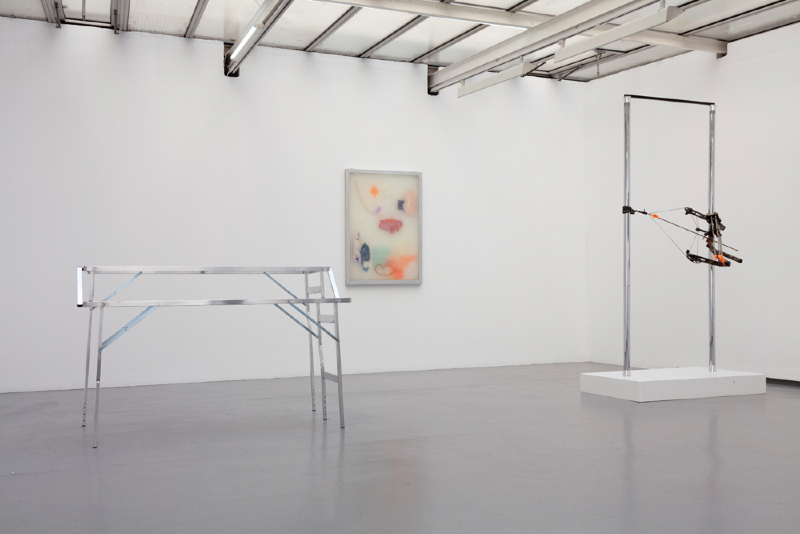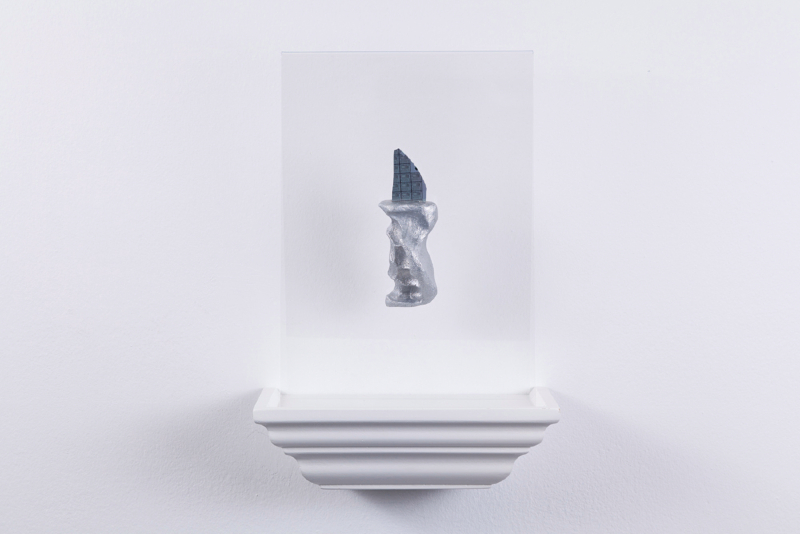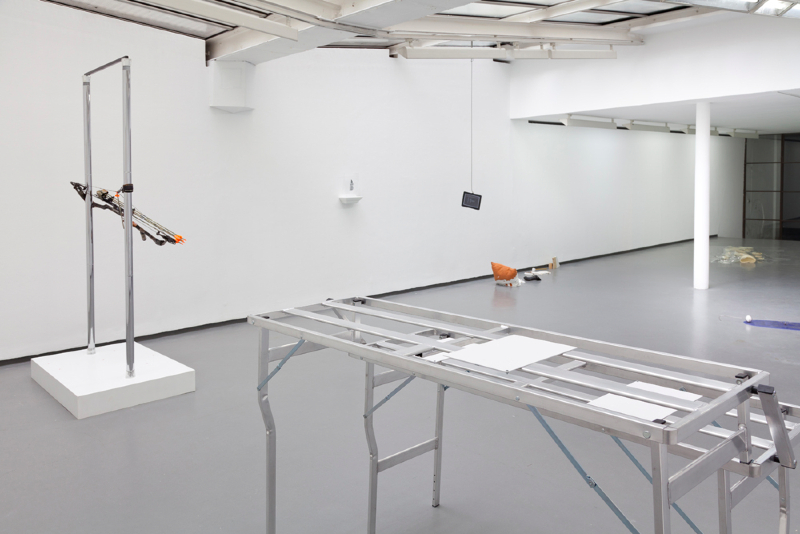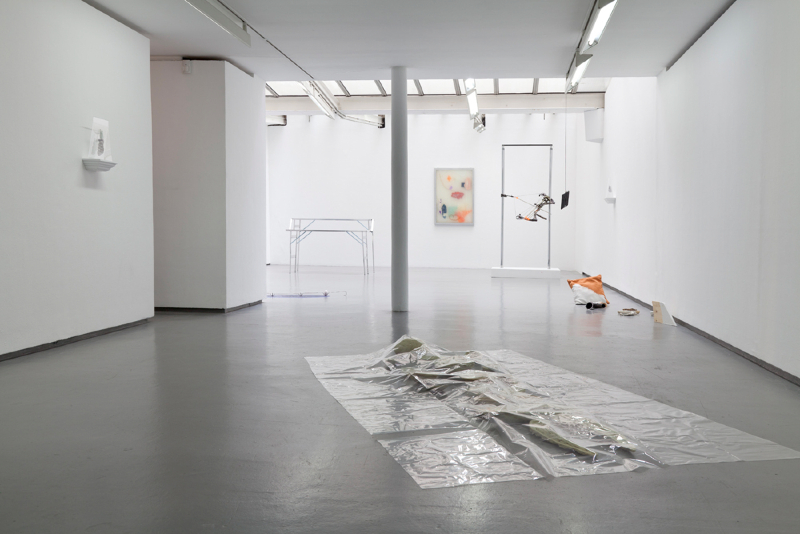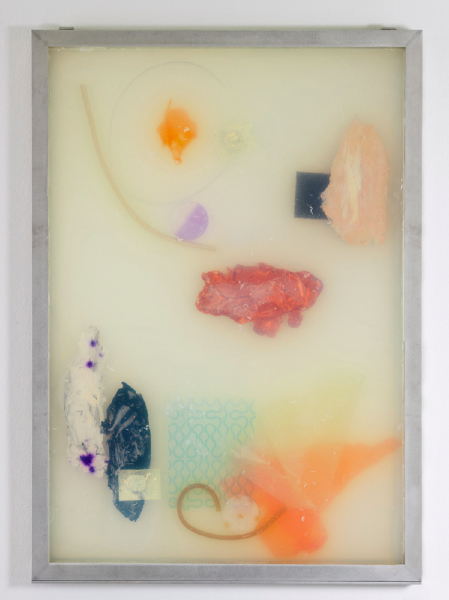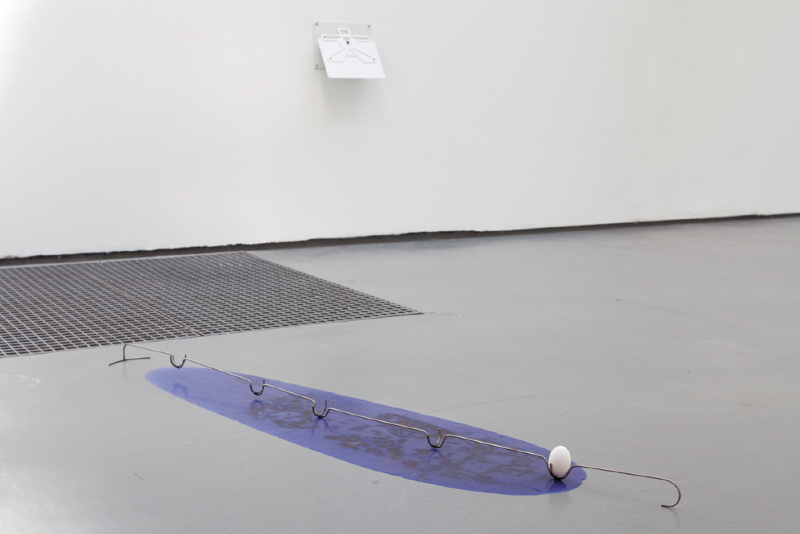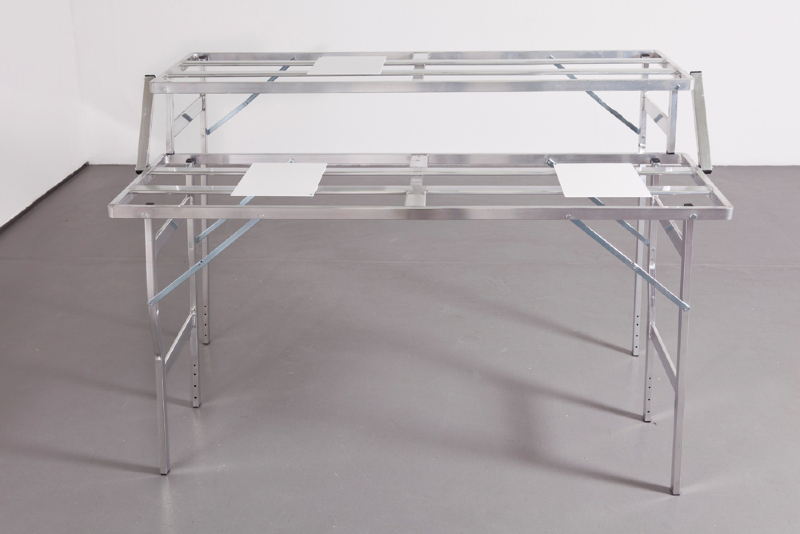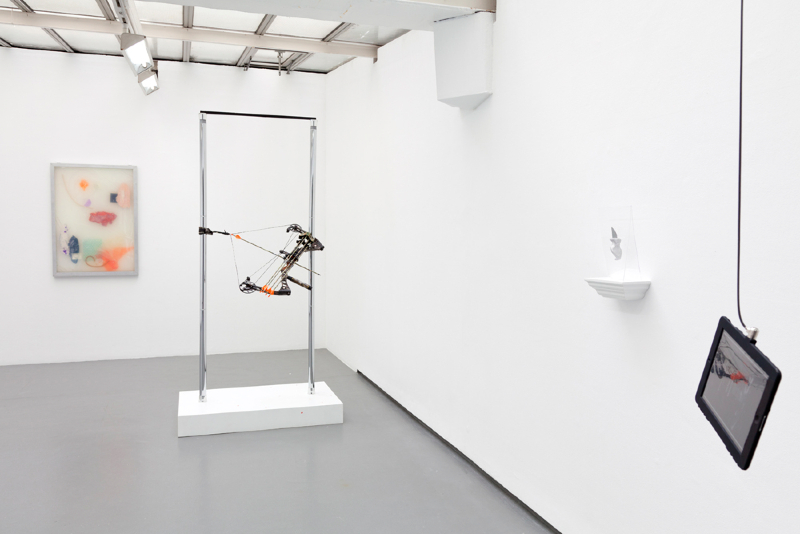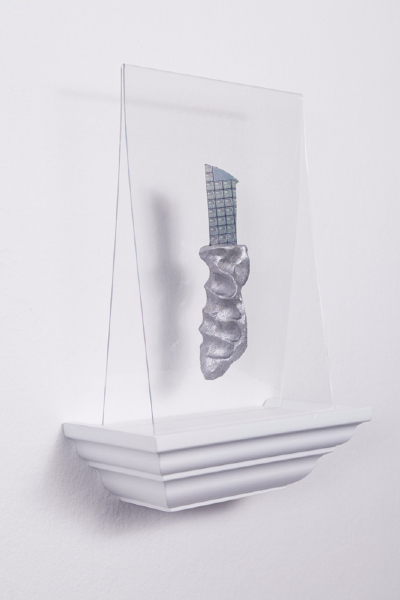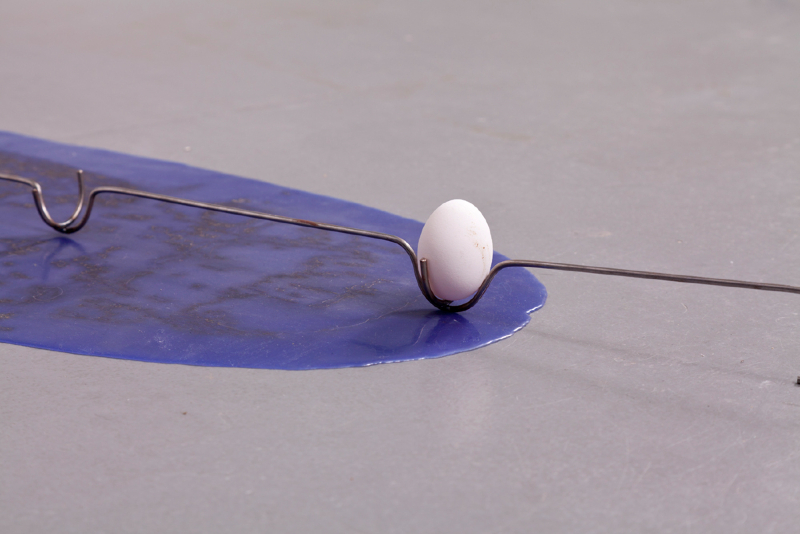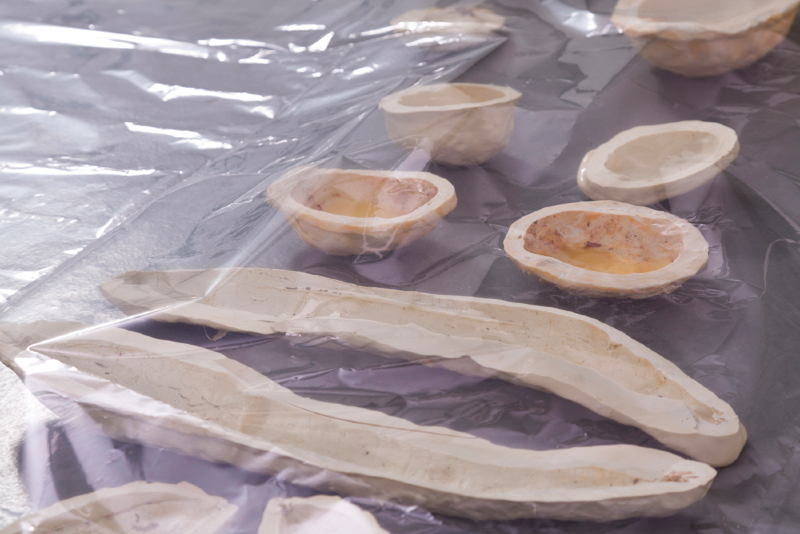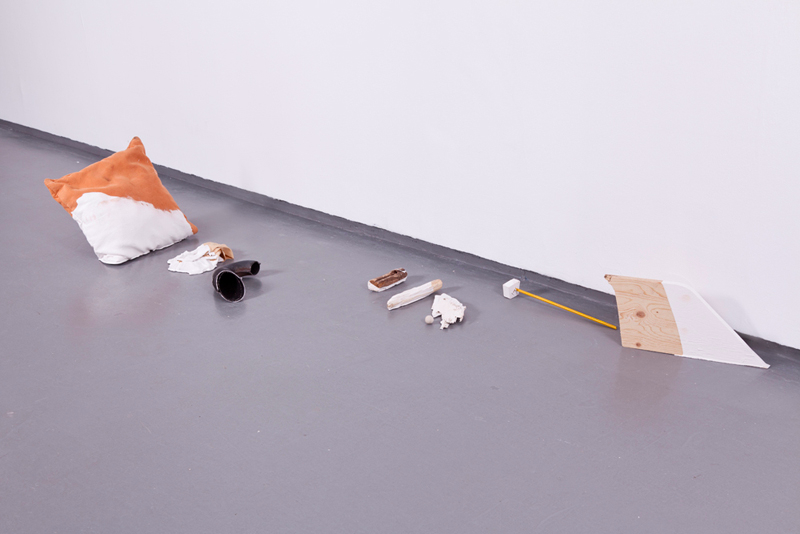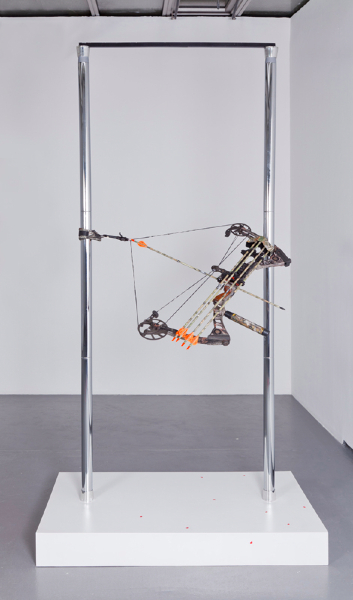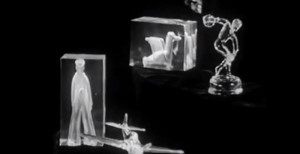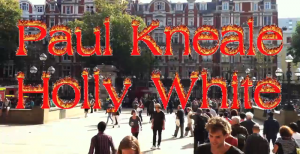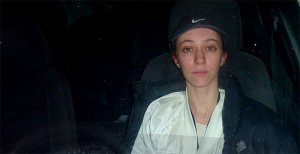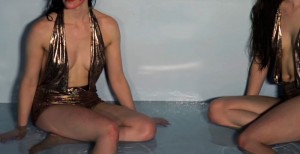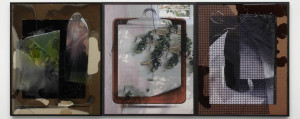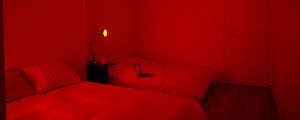“I’m already like, ‘shit, I should just stick with PhotoShop and ordering things from companies, instead of doing it myself.” Katja Novitskova doesn’t know what day it is. She’s been working with “some form of rubber, resin, something” for the upcoming group show ‘Unstable Media’ at Martin van Zomeren gallery in Amsterdam, and it turns out it’s a substance that’s fine for most people but toxic to her. In addition to the blisters she shows me through Skype across her arms, Novitskova is on medication that makes her feel weird and disoriented. She’s a visual artist, working at the centre of the hazy post-internet realm, who is literally allergic to IRL but only some of it. “For the show in Paris [Art of Living at Galerie Valentin], I did a bunch of little knives, they look like a mix of a shank and prehistoric axe, from a different material and that was fine.”
Novitskova also happens to use the word “allergy” to describe her reaction to the use of terms like “neo-liberalism” and “late-capitalism” because as a Bachelor in Semiotics and Culture Studies she’s come to realise there’s a world outside language, while that particular lexicon comes loaded with a critical ideology. But there’s even her own existing ideology, of an integration of online and offline media, that manages to filter through to her own vocabulary. Novitskova refers to her interrogative position on criticality as being a “search mode” and the contemporary visual fashion for Gulf Futurism, as a certain “meme”, started by tumblr and proliferated by the likes of Kari Altmann, Fatima Al-Qadiri, Iain Ball and Emily Jones, among others. Even her own interest in the 2010 trend mutates and manifests itself through her twitter tagline, “everything pseudo-saudi”, referring to her current computer font of choice, while her thumbnail features an Arabic text translation of “I Google Myself”, a piece produced for PWR Paper before the Arab Spring, gaining greater significance thereafter. So, in the context of an artist who’s forgotten that her webcam’s on while itching her arms and blankly staring at her twitter account, it’s these complex interactions between message and mediation, forms and formats, that makes her body of work a most relevant piece of cultural examination, inside and out.

It’s interesting that you’re making such tangible, physical work because the aesthetic that you work with seems so virtual.
Katja Novitskova: Yeah but it needs to be materialised. I’m doing this residency in Amsterdam where I have access to these material experiments. One of the premises of me getting this residency was to work with more unexpected materials that I would not be able to access easily, ordering things on line. So the first physical experiment went bad because it made me sick [laughs].
It’s funny you’re having an allergic reaction to the physical product.
KN: I think, intuitively, I know I’m not the person to be this craftsman. I’ve always known that, in a way, but then I’m still eager to explore it a bit more.
I guess your whole practice is based on that integration of physical and virtual modes.
KN: One of the things that I realised I’m trying to communicate is that it’s more a gradient, or spectrum, rather than an opposition between the virtual and physical because it kind of melts into each other. There’s no clear distinction between one and another, in a way. I use the word ‘digital’ rather than ‘virtual’ because it’s a bit more clear, a bit more precise. But now I’m trying to make works that are aware of these gradual translations between the two.
Usually, the point is to outsource this production and to act like this small business entity that makes a file and sends it to another small company that produces it and you get an object. So even the production of the object was a bit outsourced. Now, since I’m in this art context, I decided to play an artist role, to do some craft and do some things, but I already failed at it and something went wrong. Now I’m also exaggerating this artist position a bit and trying to combine the previous method with a bit of a renewal method. For instance, I’m painting things with nail polish and things like that, which I haven’t done before.
It’s interesting that you say ‘digital’ is a more precise term to use because virtual makes it sound like it’s almost imaginary. We’ve always interacted with some kind of interface, pixelated or not. Reading a book offers an experience beyond the physical.
KN: You can even say the alphabet is a form of code. There’s this spectrum of analogue codes becoming digital. It’s not that clear and that’s the interesting part.
You’ve got the same problem with defining what ‘digital culture’ actually is, in distinguishing it from, ‘print’ or even ‘oral’ culture. It all still has something to do with language.
KN: There’s also no real subject. I’m not interested in these distinctions between media. I’m interested in how this new media actively redefines the world and culture, and everything. It’s like the digital medium is just a means to a certain subject, or a certain exploration. Of course, by doing that, you look at the medium itself but it’s not the subject.
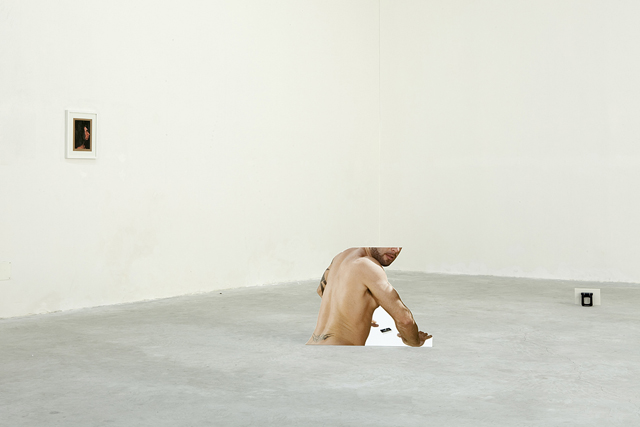
Do you think about your aesthetic being formalised in some away?
KN: Like a sort of schematic? The main aesthetical principle that I have is it has to trigger something in my brain and I think that every artist has their own thing that makes them make certain aesthetic choices over others. I’m very aware that I have this because when I make work, apart from the conceptual, it’s a very visual process. And at a certain point I just make these choices that feel right. That can end up indeed being some kind of formula that I have and it’s just a way of making, on one hand.
On the other, my work is about this playing with formats; existing formats like file formats all the way to the object format. Then it’s species, ideologies, even certain things that come into existence and then expire. I like this word ‘format’. I’m consciously playing with these formats, of course, and even with formats that are present in contemporary art. For instance, there’s this format of print on the wall, or of painting, or sculpture. I’m half consciously playing with all these formats. It’s like the smartphone as a format. This is more the material form of it but the detail and aesthetic choices are not a formula that I have, they’re very… I really have to like it myself before I make use of it [laughs].
Obviously, they bare close resemblance to corporate aesthetics.
KN: Well, the corporate aesthetic is a format and I’m making a use of it. Stock animal documentary is a format, stock photography is a format, stock photography that deals with economics is a format. It’s a little pool of imagery that a lot of people make use of and that’s really popular… certain animals symbolising wild nature or something. I make use of this quite consciously and because I’m trying to mix the corporate aesthetic with the natural aesthetic, I’m trying to expose both of them as formats. I’m also interested in the nature of economics so it works on several layers, it works in this very visual layer but it also works on a conceptual layer, for me.
That idea of the economy in your work is reflective of the use of these formats that market an experience or “authenticity” through this construct of nature through imagery.
KN: I think Timur Si-Qin and Agatha Wara, who I worked with before, write about this. They explain things better than I would, but I agree with them that it’s basically objects and imagery and the whole ecological layer on the societies, which is there to grab our attention and to sell us something. In order for this to happen, the image itself, or the stories that they’re showing have to grab our attention. So there’s a certain visual narrative element that they use and they think work.
I’m more interested in it in terms of material. There’s so much more art in advertisement, this mass of things, the banners, the cut-outs, the displays, the flags, the pens; all this marketing stuff that is being produced massively every year, or images just to be this interface between certain products and people. In a way, I think it makes sense to think of art in relation to this attention-grabbing advertisement, especially how it exists online. Where it can be as public as an artwork, where everything is democratic. That’s at least a few years ago, where there was no differentiation if you were looking at advertisement images or art online; it’s just a jpeg.
It’s all connected. Obviously as an artist, or a person, you respond to your context and your context is a world of advertising.
KN: Yeah it’s environment and it’s an environment, which is trying to grab our attention. Of course, we’re so aware of it by now that, I think, a lot of us choose which advertisement to be affected by and which not. It’s a bit like that with art, except art is just like an advertisement of itself already [laughs]. **
Katja Novitskova’s work will be showing at two group exhibitions at Martin van Zomeren in Amsterdam and Galerie Valentin in Paris, starting June 22, 2013.
